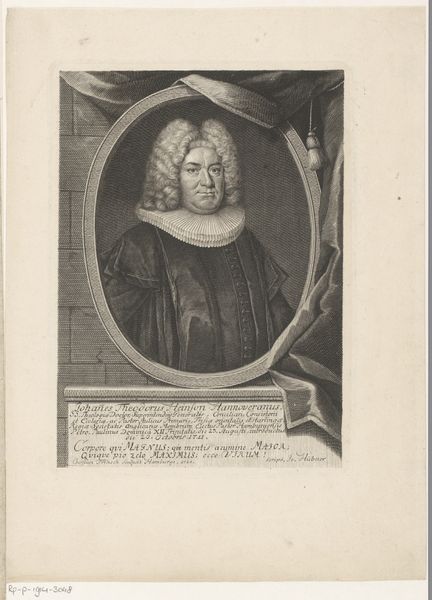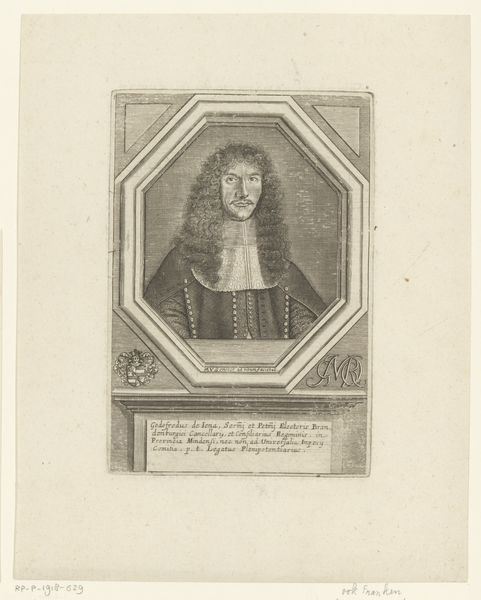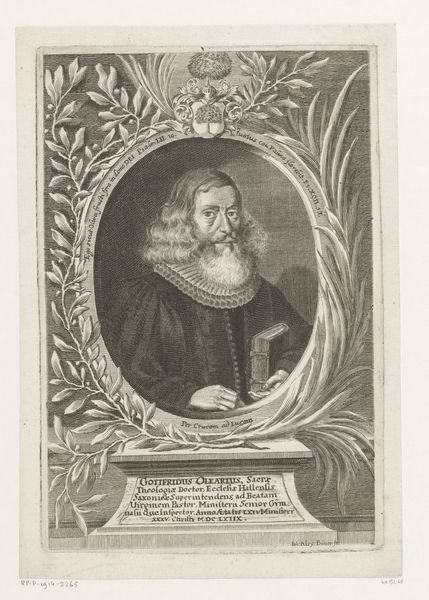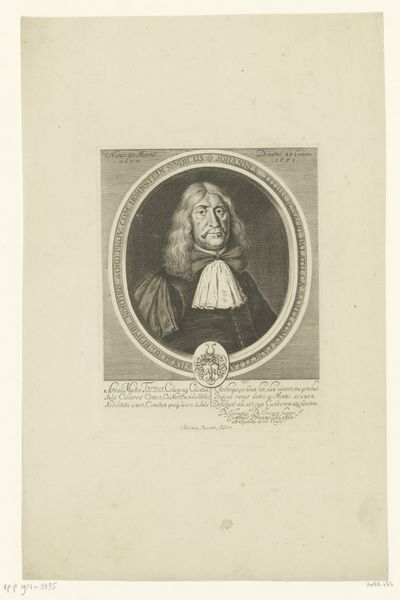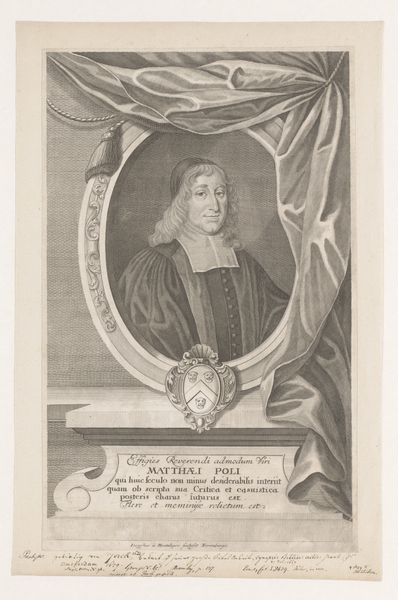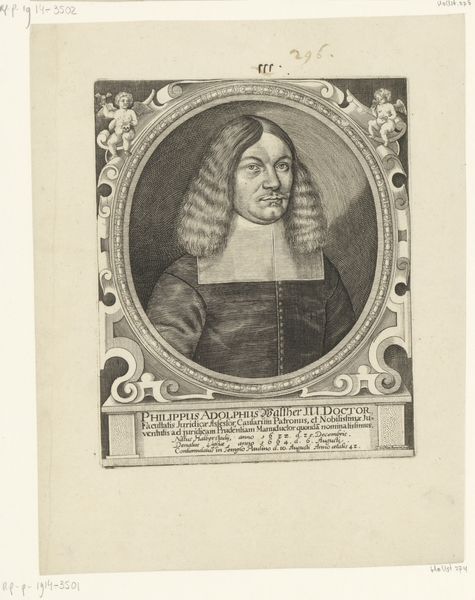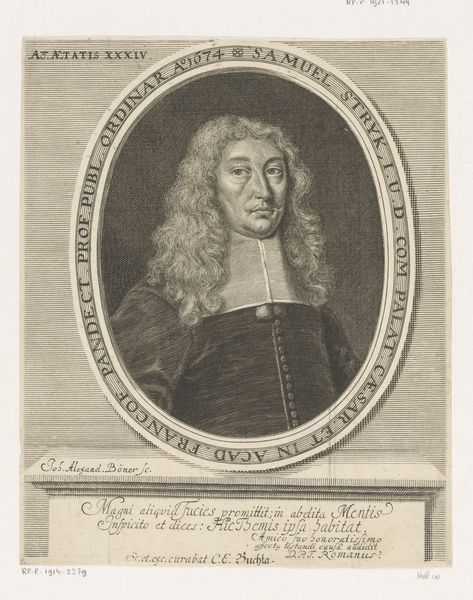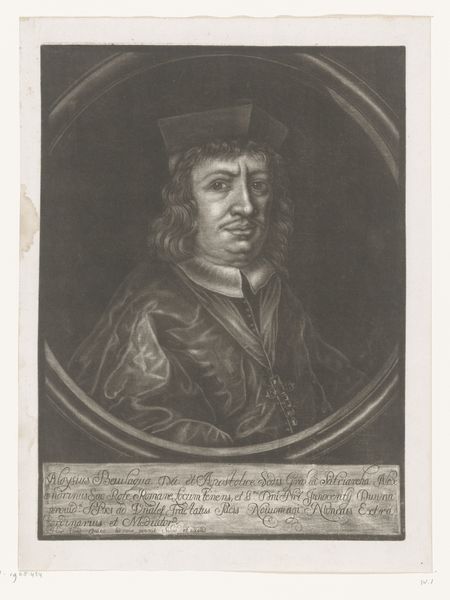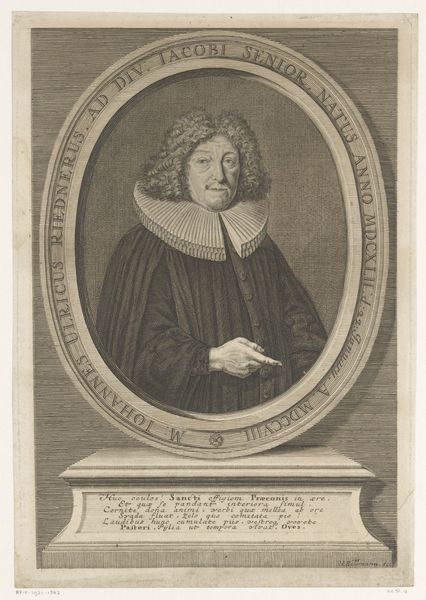
print, engraving
#
portrait
#
medieval
#
baroque
# print
#
old engraving style
#
caricature
#
figuration
#
line
#
history-painting
#
engraving
Dimensions: height 166 mm, width 119 mm
Copyright: Rijks Museum: Open Domain
This engraving of Maximilian Willibald von Waldburg-Wolfegg, was made by J.E. van Anvien in 1698. The image presents us with a complex array of social and institutional ideals. Portraits such as this, made in the Netherlands, were potent symbols of status. Here, Maximilian is framed by a formal oval, sharply dressed in his armour and lace collar. The image promotes the idea of hereditary power. The text at the bottom makes explicit reference to his titles and position. This emphasis is typical of art produced for and by the aristocracy of the time. Images like this also reveal the role of printmaking institutions. The prints could be widely distributed, helping to consolidate social hierarchies. To better understand this artwork, a researcher would consult archives and genealogical records to learn more about Maximilian's social and political position. In the end, the image reflects the complex interplay between individual identity, social status, and the institutions that shaped them.
Comments
No comments
Be the first to comment and join the conversation on the ultimate creative platform.
